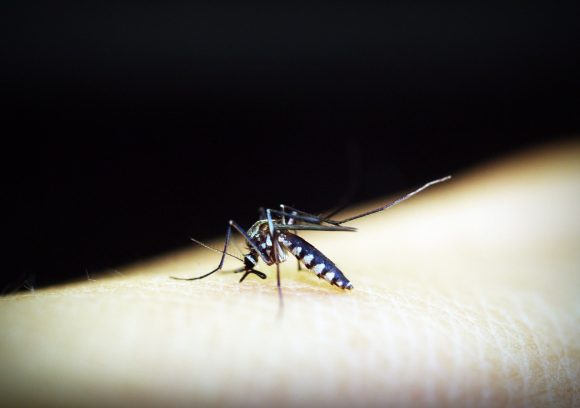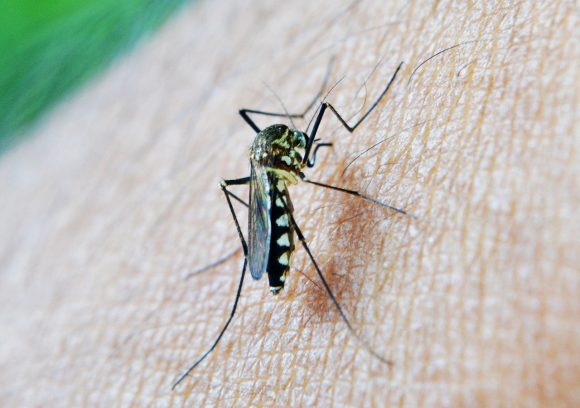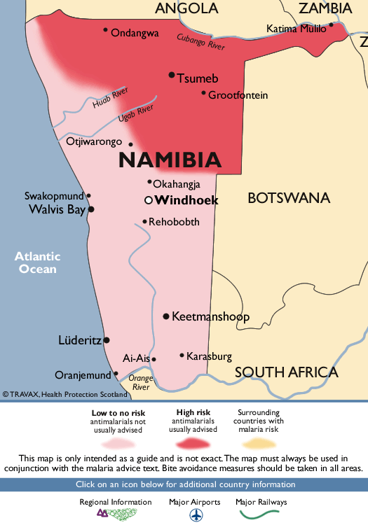Understanding Malaria in Namibia
Safeguarding Your Health: Essential Measures Against Malaria in Namibia

Malaria – prevention is the best policy
While entirely preventable and treatable, malaria is potentially a serious disease that could be fatal if not diagnosed and treated in good time. The disease is transmitted to humans through the bite of the female mosquito of the Anopheles genus, which carries the parasite in its saliva, usually becomes active after sunset, and remains so through the night.
The wetter northern areas of Namibia are high-risk malaria areas, so prospective travellers need to take precautions before visiting these parts of the country. While malaria is occasionally reported from other parts of Namibia, these are generally regarded as low-risk areas.
The risk of contracting malaria when travelling through malaria-prone parts of the country can be reduced by wearing long sleeves and trousers after dark, rubbing repellents on exposed skin, sleeping under a mosquito net, and taking prophylactics as prescribed by a medical practitioner prior to departure.
As there are many possible side effects from anti-malarial drugs, travellers are advised to have a prophylaxis that is suitable for them prescribed by their general practitioners a few weeks before they leave home. Anti-malarial and preventative drugs include chloroquine- and mefloquine-based tablets, the antibiotic doxycycline, malarone, quinoline-related compounds and artemisinin-based derivatives and compounds.

Since malaria is a life-threatening disease, treatment should be sought immediately after fever/flu-like symptoms appear.
Malaria Map


